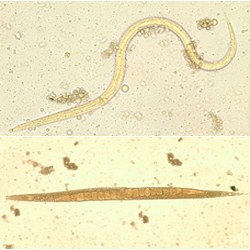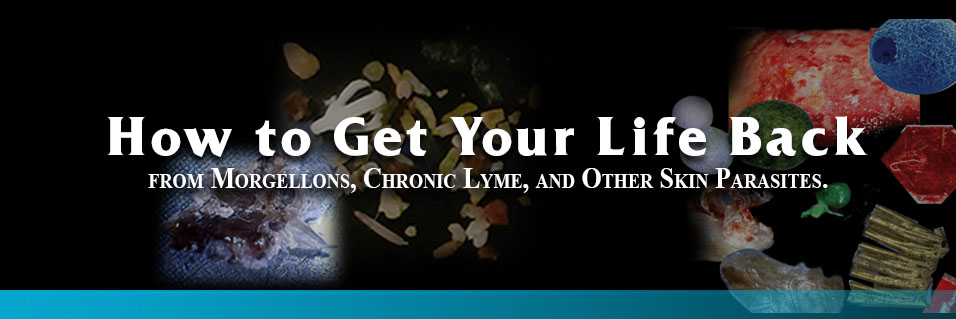Strongyloides stercoralis is another mean skin parasite. Unlike Morgellons and Collembola, it can be diagnosed by a blood test and there is a CDC recommended treatment. It is generally contracted from infected feces of rats, birds, and so on.
 |
The organism is a nematode and different sources define it as a round worm, flat worm... It's life cycle starts internal and goes to the skin and then back internal as shown here.
|
Being that I was dealing with both Strongyloides stercoralis and Collembola it was difficult to know which symptoms were associated with each parasite. Because I was infected with it, initially I thought it was more prevalent than it is. Nevertheless, since its not uncommon to have more than one parasite and if you've stagnated in getting your life back, it may be very important for you to answer the following questions. These questions have been added to the Skin Parasite Questionnaire. If you have not completed the questionnaire for a complimentary personalized protocol, it's attached to this email.
a. Do you have rashes on your skin?
b. Do you have upper abdominal pain or burning?
c. Do you have diarrhea or alternating diarrhea and constipation?
d. Do you have a cough?
e. Any red hives near the anus?
f. Any vomiting?
g. Have you had weight loss since the beginning of your infection without being on the King Diet™?
If you've answered "yes" to one of more of those questions, it may be important to consider ordering the Igg blood test for Strongyloides. Of the above symptoms, the only one that I had was skin rashes. Aside from the bull's eye rash associated with Lyme disease, those with Morgellons, Collembola, skin fungus, and mites do not typically experience skin rashes. Strongyloides is also highly contagious. For me, the diet was effective at keeping it in remission and when I was finally diagnosed, the treatment of choice at that time was Thiabendazole. The medication does not kill the organisms, but destroys their ability to reproduce so, as I remember, the medication was taken over a six week period of time. Today, I understand the treatment of choice is Ivermectin as it has less potential side effects than Thiabendazole.
The organism can only be seen microscopically in one's stool. There are images of it in my book. However, the stool must be analyzed within 20 minutes of elimination to find it.
|



